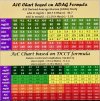kitedoc
Well-Known Member
- Messages
- 4,785
- Location
- Adelaide, South Australia
- Type of diabetes
- Type 1
- Treatment type
- Pump
- Dislikes
- black jelly beans
I note the hypoglycaemia video of 2022 and the advice given. Whilst I agree with the advice about use of glucose to combat or remedy a hypo, (assuming the person can safely swallow, I have come, at 58 years on insulin as a T1D, to realise that use of fizzy drinks, fruit juice and lollies is not an ideal remedy - UNLESS as a last resort - glucose supply being exhausted, unusable etc.
Why? Think about how often hypos happen, particularly on high carb diets with 'industrial' doses of insulin (as per the late Dr Bernstein), and in young children and adolescents with T1D.
Sucrose, the main sugar in these processed food remedies, is split by an enzyme in the mouth into glucose and fructose (fruit sugar). Glucose is rapidly absorbed to help raise the blood glucose level as expected. BUT the fructose in this rapidly absorbed form is dealt with by the liver - THE SAME way as alcohol -(in fact rapidly absorbed fructose is sometimes referred to as 'children's alcohol'.
Imagine repeated doses of fructose leading to fatty liver. Imagine this happening over years - the result of fructose exposure is linked to not only fatty liver, a pre-cursor fro cardio-vascular disease, but to formation of cataracts in the eyes, damage to retinas, kidney and peripheral nerves.
To add insult to injury: when one's BGL reaches > 7 mmol/l, a biochemical pathway, the polyol pathway, converts 30% of the blood glucose to fructose! Hence, should TIR exceed 7 mmol/l? Now look at the accompanying chart attached: an equivalent HBA1c to an average BGL level of 7 mmol/l = 5.7% (DCCT-derived) and of average BGL of 6 mmol/l = HBA1C off 5.2%.
So fructose happens to be the most powerful and rapid glycator (damage to protein when a sugar attaches to it): fructose> galactose (breakdown of lactose - milk sugar) and least, glucose.
All good reasons to avoid fructose and BGLs > 7 mmol/l. And sucrose & fructose affects out teeth more than glucose.
What HBA1c is recommended to you and did your health team point out the dangers of sucrose as a hypo remedy?
Why? Think about how often hypos happen, particularly on high carb diets with 'industrial' doses of insulin (as per the late Dr Bernstein), and in young children and adolescents with T1D.
Sucrose, the main sugar in these processed food remedies, is split by an enzyme in the mouth into glucose and fructose (fruit sugar). Glucose is rapidly absorbed to help raise the blood glucose level as expected. BUT the fructose in this rapidly absorbed form is dealt with by the liver - THE SAME way as alcohol -(in fact rapidly absorbed fructose is sometimes referred to as 'children's alcohol'.
Imagine repeated doses of fructose leading to fatty liver. Imagine this happening over years - the result of fructose exposure is linked to not only fatty liver, a pre-cursor fro cardio-vascular disease, but to formation of cataracts in the eyes, damage to retinas, kidney and peripheral nerves.
To add insult to injury: when one's BGL reaches > 7 mmol/l, a biochemical pathway, the polyol pathway, converts 30% of the blood glucose to fructose! Hence, should TIR exceed 7 mmol/l? Now look at the accompanying chart attached: an equivalent HBA1c to an average BGL level of 7 mmol/l = 5.7% (DCCT-derived) and of average BGL of 6 mmol/l = HBA1C off 5.2%.
So fructose happens to be the most powerful and rapid glycator (damage to protein when a sugar attaches to it): fructose> galactose (breakdown of lactose - milk sugar) and least, glucose.
All good reasons to avoid fructose and BGLs > 7 mmol/l. And sucrose & fructose affects out teeth more than glucose.

What HBA1c is recommended to you and did your health team point out the dangers of sucrose as a hypo remedy?
